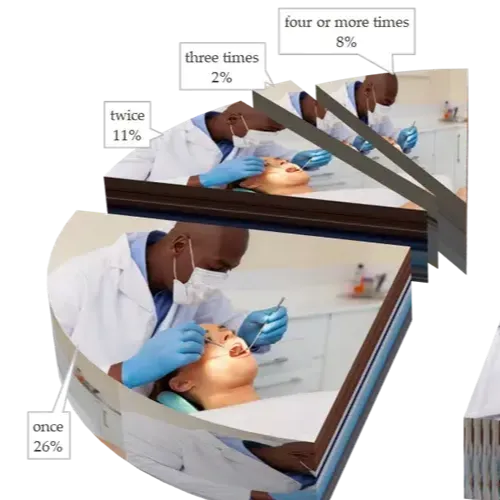How Big Is the Embezzlement Problem? Almost 50% of dentists have already been victims of employee theft
Home > Media > Embezzlement BlogHow Big Is the Embezzlement Problem? Almost 50% of dentists have already been victims of employee theft
September 30, 2020

We are featuring some excerpts from David Harris’ book Healers versus Stealers: How to Outsmart the Thief in Your Dental Practice, now available on Amazon. David discusses the size of the embezzlement problem facing dentistry.
Embezzlement has been around since the beginning of recorded history. The Code of Hammurabi, the law code of the Mesopotamians, is most famous for its “an eye for an eye” provision. Less well-known is that the Code also specifically addressed embezzlement, as did the legal code for Ancient Egypt.
The earliest record of embezzlement in a North American dental practice was in 1857 (which, by the way, also involved a murder). When you consider that the world’s first dental college, the Baltimore College of Dental Surgery, admitted its first class in 1840, it didn’t take long for this problem to emerge.
Former Federal Reserve Chairman Alan Greenspan said this about embezzlement: “Corruption, embezzlement, fraud, these are all characteristics that exist everywhere. It is regrettably the way human nature functions, whether we like it or not… No one has ever eliminated any of that stuff.”
While measurement issues make the answer to the question of prevalence in dentistry somewhat elusive, a comparison of surveys taken of dentists over time shows that the embezzlement problem is growing.
The most recent broadly-based survey of embezzlement was performed by the American Dental Association’s Center for Dental Practice, which was published in 2019. In this survey, 19,991 dentists were polled, and the astonishing result was that 48.64% of those who responded confirmed that they had been victims of embezzlement.
ADA Surveys the Size of the Embezzlement Problem
It didn’t stop there. As can be seen from the graph below, almost half of the dentists who reported being embezzled disclosed that they had been victims more than once, with 9% of respondents confirming that they had been victimized four or more times. Clearly the embezzlement problem affects the majority of dentists.
If we multiply the number of dentists in each frequency category by the minimum frequency (i.e., 27% x 1, plus
11% x2, and so on), we can determine that, for every 100 dentists, there have already been at least 91 embezzlements
that have taken place.
In comparison, a 2007 American Dental Association survey determined that 35% of the respondents had been victims, so in the 11 years between the two surveys, the percentage of dentists reporting embezzlement increased by more than a third (i.e., 13% of those surveyed). This growth is a significant and alarming trend in the size of the embezzlement problem.
Have questions or concerns about your practice? Want to lower your risk of being embezzled?